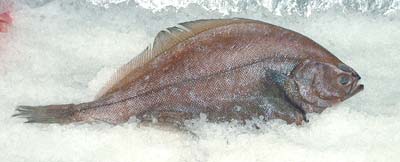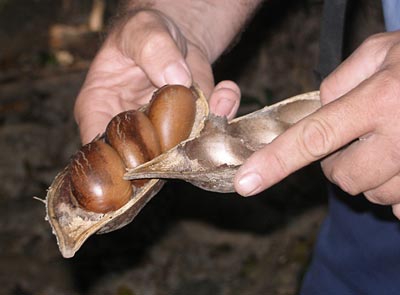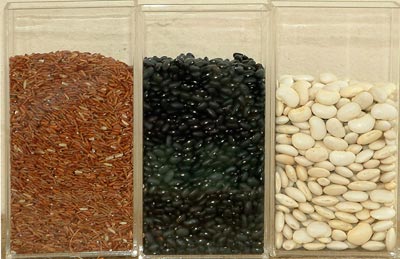A variety of Japanese plum with very dark purple skin and firm amber-coloured flesh (hence its name).
A drink consisting of equal parts of stout (often Guinness) and pale ale. The stout will automatically separate out to the top. In some places this can also mean equal parts of stout (again, often Guinness) and white wine.
This could refer to any number of combinations of vanilla ice cream, chocolate ice cream, cream and chocolate sauce. It can also mean black coffee with a container of cream served separately.
Black coffee with a container of cream served separately. This could also refer to any number of combinations of vanilla ice cream, chocolate ice cream, cream and chocolate sauce.

The common flounder with dark skin above and firm white flesh, fished in the Atlantic Ocean off the eastern seaboard of North America. In New England the name blackback flounder is given to these fish when they are under 1.35 kg (3 lbs). If they are heavier than that they are called lemon sole, which is completely different from what is called lemon sole in the United Kingdom.
The black bass is a small, firm, lean, freshwater fish with delicate white flesh with varieties called smallmouth and largemouth. It should be skinned before cooking as the skin can convey a musky, weedy flavour, but it is versatile.

Blackbeans are almost conker-like beans are found in the tropical rainforest of north eastern Australia, often found along creeks and rivers. When crushed the leaves smell almost like cucumber. The seeds, held in a generous pod, are poisonous in their raw state. However, as with many other things, the aboriginals found way to make use of these and found that, by baking them on hot coals, ground and then washed in continuously running fresh water for ten days or so, they could make an edible flour. These were formed into shapes and then baked. Not very appetising but good source of starch when you are scraping your sustenance from such a hostile environment. It is recommended that you don't attempt to eat these beans. Even the aboriginals did not eat them except in times of scarcity.

Shiny, kidney-shaped beans with black skin, white meat and a slightly sweet flavour. They are used in feijoada and black bean stew, or flavoured with cumin, coriander (US: cilantro), jalapeno chillis, avocado, roasted red peppers, ham and soured cream. They are also good in salads or served with grilled chicken.
A type of gelatinous black bean curd or yam cake. It is processed from the taro-like, glutinous root of konnyaku yams or 'devil's tongue' (snake palm) into either solid, gelatinous, brownish cakes or into ito-konnyaku, i.e. spaghetti-like threads. The tubers are peeled, pounded vigorously, boiled and the curd precipitated out. It is calorie-free, is 90% water and helps cleanse the digestive system. Konnyaku is valued more for its spongy texture than flavour and is cut into strips and added to vegetable soups, salads and simmered dishes. It can either be unrefined, in which case it is a dirty grey, or refined by bleaching and filtering, in which case it is pearly white and comes in several different shapes. It is also available in tins.